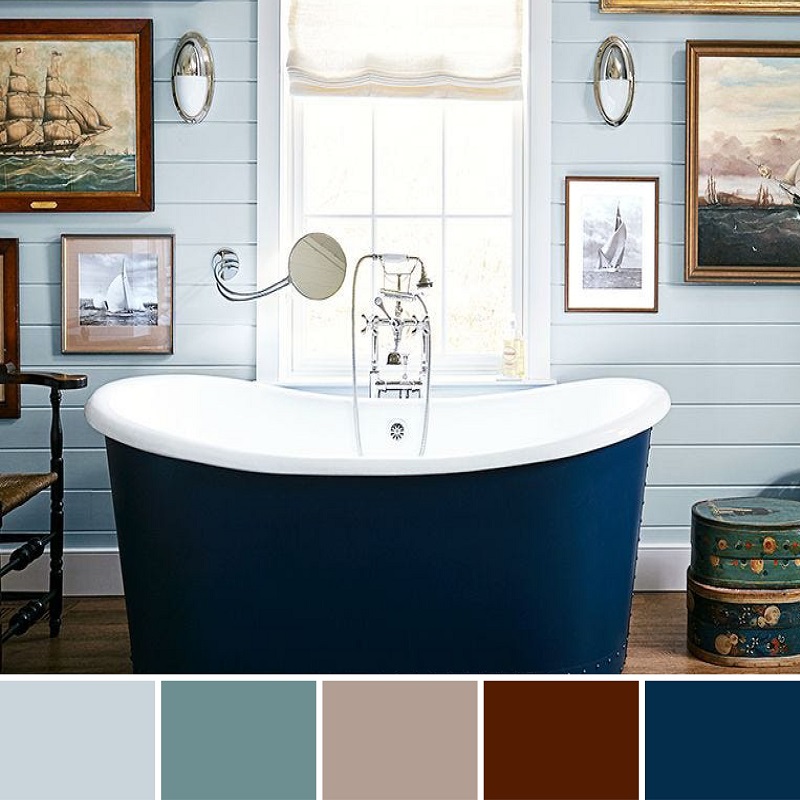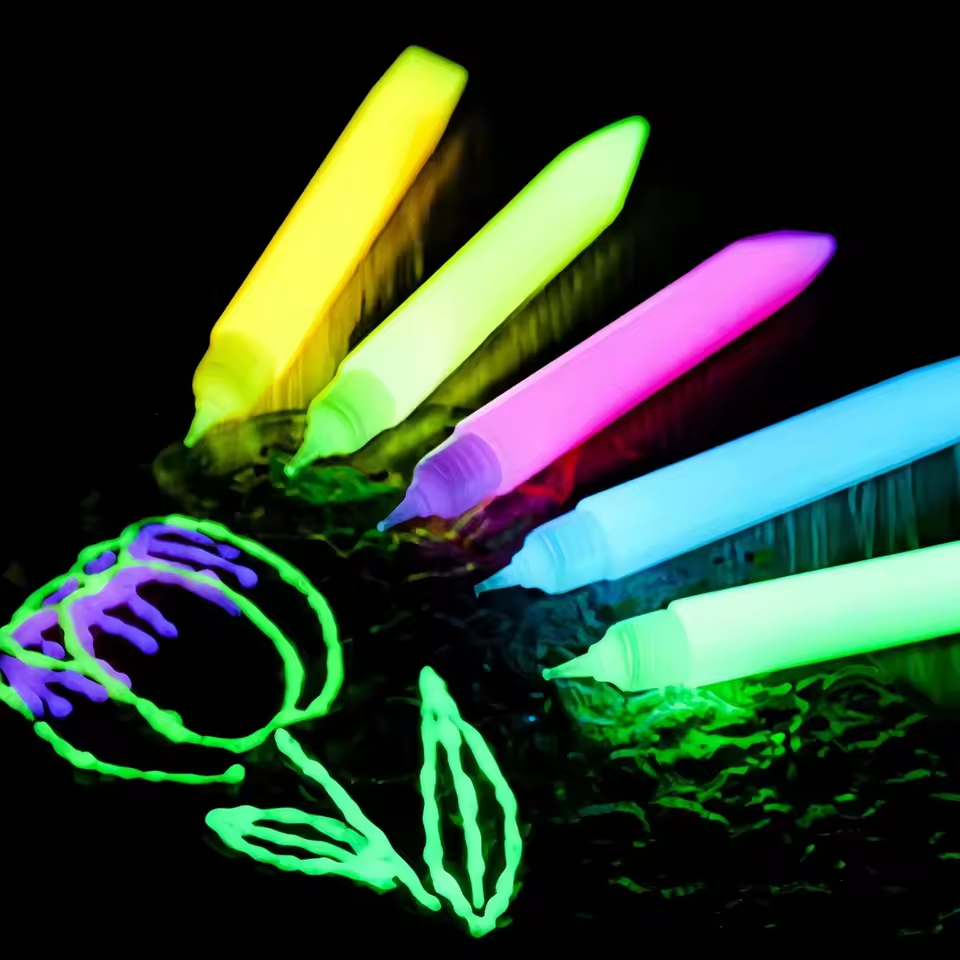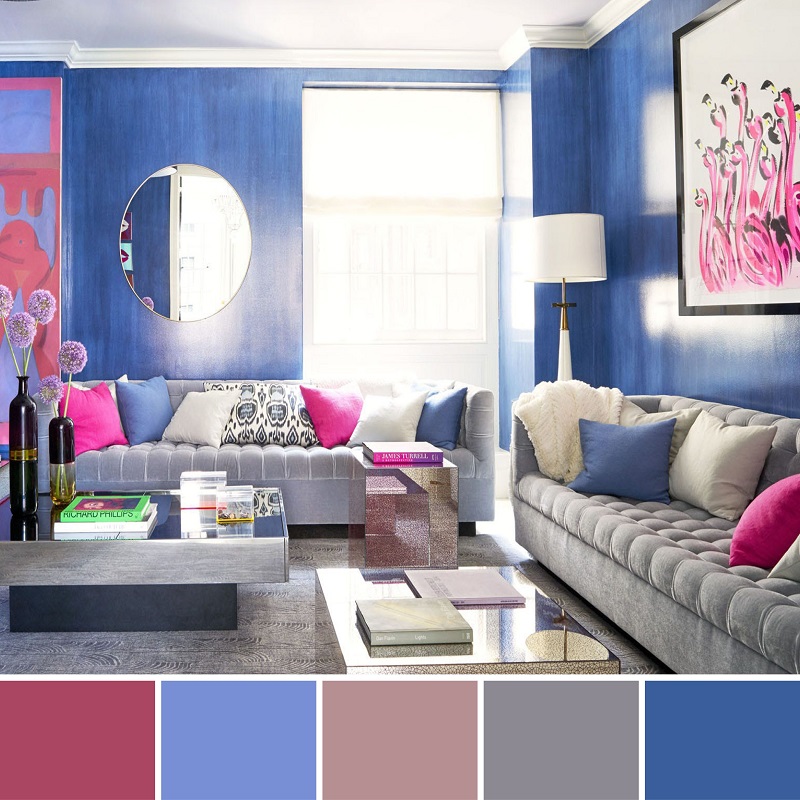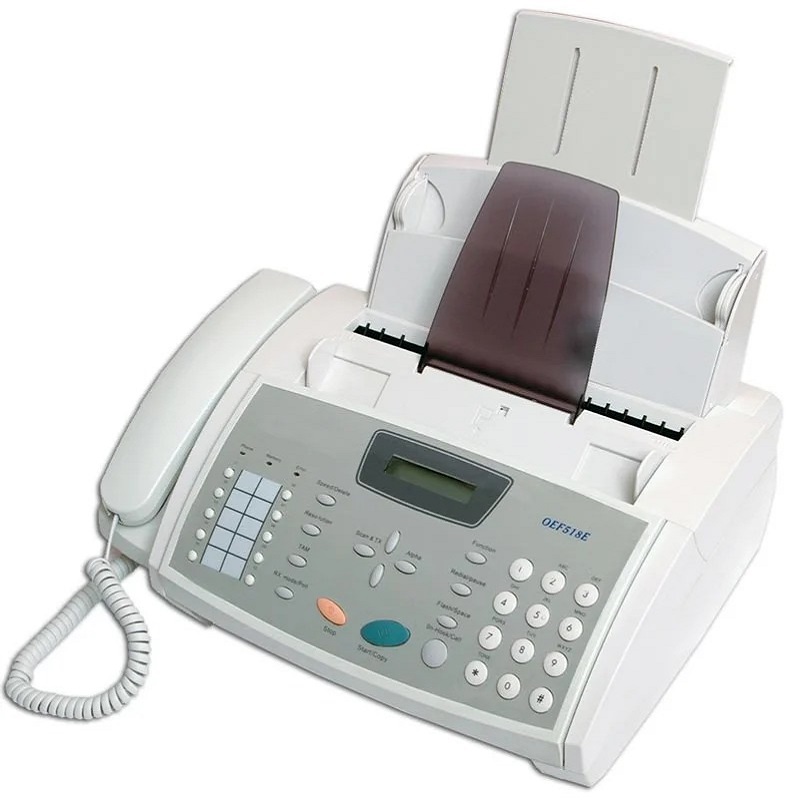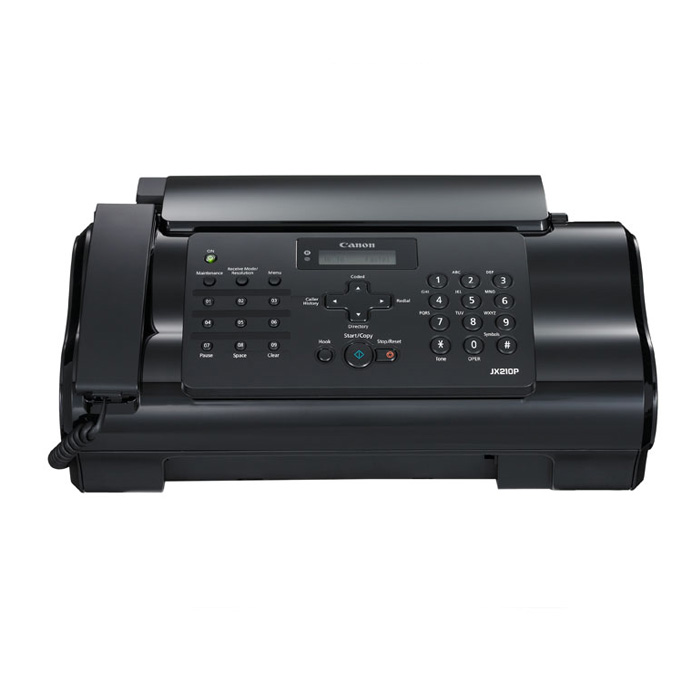The dark blue palette has become a popular choice for interior design in recent years. Its rich, deep tones can create a sense of sophistication and elegance in any space. If you’re considering incorporating a dark blue palette into your home, there are a few things to keep in mind. In this article, we’ll explore the different ways you can use a dark blue palette in your interior design, from the walls and furniture to the accessories and accents. We’ll also discuss the best color combinations and how to avoid making your space feel too dark or overwhelming. By the end of this article, you’ll have the tools and inspiration you need to create a stunning and stylish interior using a dark blue palette.
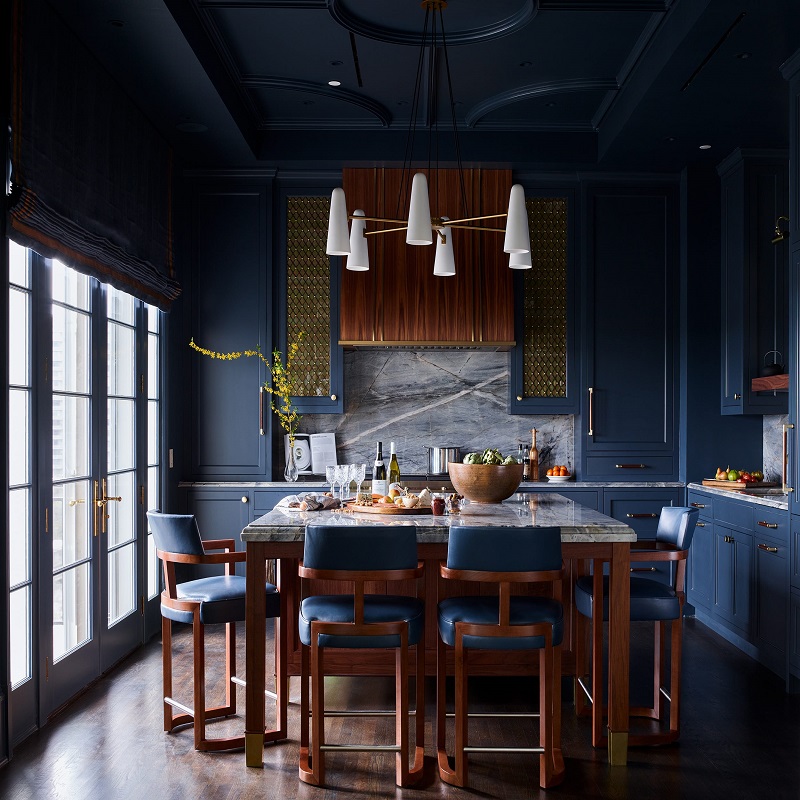
Choosing the Right Shade of Dark Blue
The first step in using a dark blue palette in your interior design is choosing the right shade of blue. There are many different shades of dark blue to choose from, ranging from navy and indigo to midnight and royal blue. When selecting a shade, it’s important to consider the natural light in your space, as well as the overall feel you want to create. If you have a lot of natural light, you can go for a deeper shade of blue without worrying about making the space feel too dark. On the other hand, if your space is on the smaller side or lacks natural light, you may want to opt for a lighter shade of dark blue to keep the space feeling open and airy.
Incorporating Dark Blue on the Walls
One of the most common ways to use a dark blue palette in interior design is to paint the walls a dark blue color. This can create a dramatic and striking look, especially when paired with white trim and accents. Keep in mind that painting all of the walls in a blue red color palette can be overwhelming, so consider using an accent wall or incorporating dark blue into a focal point, such as a fireplace or built-in shelves. You can also use dark blue wallpaper to create a similar effect without the commitment of paint. If you’re not ready to commit to such a bold look, consider incorporating dark blue into your space through other elements, such as furniture, textiles, and accessories.
Using Dark Blue in Furniture and Textiles
Another way to incorporate a dark blue palette into your interior design is through furniture and textiles. Dark blue upholstery, such as a sofa or armchair, can add a touch of luxury and sophistication to any space. You can also incorporate dark blue through throw pillows, rugs, curtains, and other textiles. When using dark blue in furniture and textiles, it’s important to balance the color with lighter hues, such as white or light gray, to keep the space from feeling too dark and heavy. Consider mixing and matching different textures and patterns to add visual interest and depth to the space.
Accenting with Dark Blue
In addition to larger furniture and textiles, you can also incorporate a dark blue palette into your interior design through smaller accents and accessories. This can include things like artwork, vases, throw blankets, and decorative objects. These smaller touches of dark blue can help tie the overall color scheme together and add visual interest to the space. You can also consider incorporating dark blue through lighting fixtures, such as pendant lights or table lamps, to add a warm and inviting glow to the space.
Creating Contrast with Lighter Colors
When using a dark blue palette in your interior design, it’s important to create contrast with lighter colors to keep the space feeling balanced and welcoming. Consider using lighter hues, such as white, cream, or light gray, for trim, accents, and furniture to help offset the darkness of the blue. You can also incorporate natural materials, such as wood, stone, and metal, to add warmth and texture to the space. By mixing and matching different materials and colors, you can create a dynamic and visually appealing interior that makes the most of the dark blue palette.
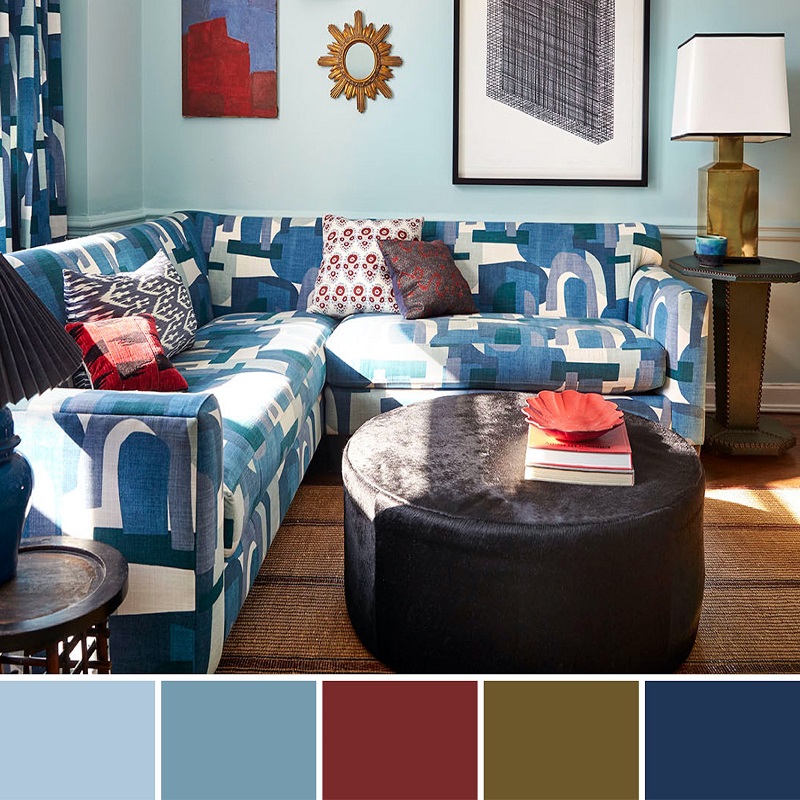
Avoiding a Too-Dark Look
While a dark blue palette can create a sophisticated and elegant look, it’s important to avoid making your space feel too dark or overwhelming. To prevent this, consider using dark blue as an accent color rather than the dominant hue. You can also incorporate gold color palette and natural materials to balance out the darkness of the blue and keep the space feeling open and inviting. Additionally, consider using strategic lighting, such as sconces, table lamps, and floor lamps, to add warmth and glow to the space, especially in areas with limited natural light.
Precautions for using dark blue palette
The dark blue palette is a versatile and elegant choice for any design project. From interiors to graphic design, the deep and rich hues of dark blue can add a sense of sophistication and timelessness to any space or composition.
Understanding the Dark Blue Palette
Dark blue is a color that is often associated with qualities such as stability, depth, and trustworthiness. It can evoke a sense of calm and tranquility, making it a popular choice for interior design, branding, and marketing. The dark blue palette typically includes shades such as navy, midnight blue, and indigo. When used in combination with other colors, dark blue can create a striking contrast and add depth and dimension to a design.
Tips for Using the Dark Blue Palette
Consider the Overall Mood
Before incorporating dark blue into your design, it’s important to consider the overall mood and atmosphere you want to create. Dark blue can be used to evoke a sense of elegance and formality, but it can also be used to create a more relaxed and casual vibe, depending on how it is used in combination with other elements. For example, pairing dark blue with warm neutrals can create a cozy and inviting atmosphere, while combining it with metallic accents can lend a sense of luxury and sophistication.
Balance with Lighter Hues
While dark blue can be a powerful and captivating color, using it in large doses without balancing it with lighter hues can make a design feel heavy and oppressive. To avoid this, consider incorporating lighter shades such as pale blue, sky blue, or even white to create contrast and balance. This can help to prevent the dark blue from overwhelming the space or composition and create a more harmonious overall effect.
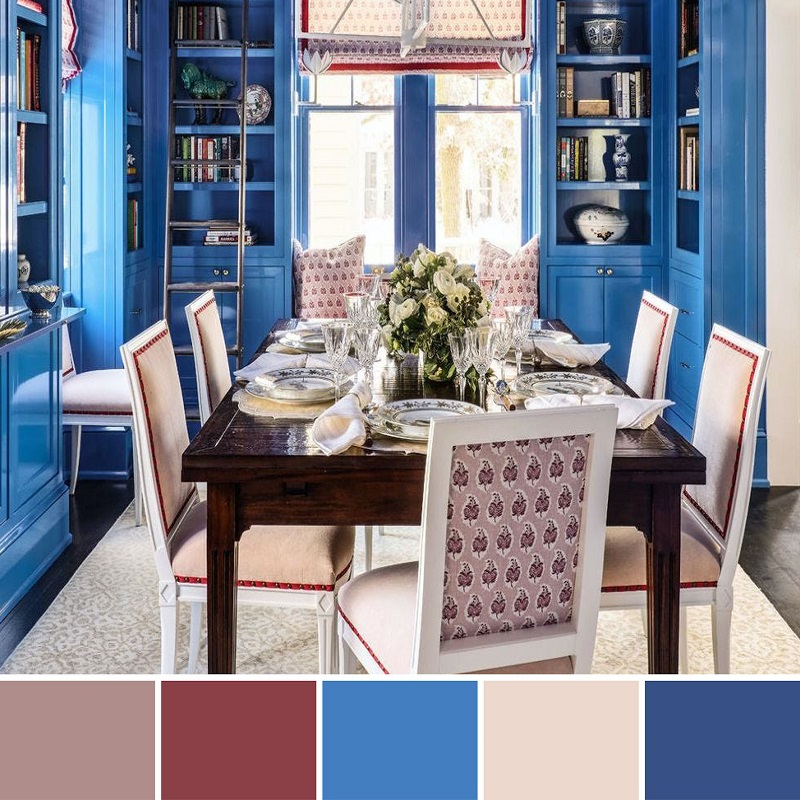
Use Texture to Add Interest
Incorporating texture into a design can add depth and visual interest, especially when using a dark color palette. Consider using materials such as velvet, suede, or richly textured fabrics to add a tactile element to a space. In graphic design, experimenting with different textures and finishes can add dimension to a dark blue composition and create a more dynamic and engaging visual experience.
Pair with Complementary Colors
When using dark blue as the primary color in a design, it’s important to consider how it will interact with other colors. Pairing dark blue with complementary ibis paint color palette such as gold, mustard, or coral can create a striking and sophisticated look. These warm and vibrant hues can add a pop of color to a predominantly dark blue palette and create a sense of balance and harmony.
In conclusion
The dark blue palette can be a stunning and stylish choice for interior design. By choosing the right shade of dark blue and incorporating it into your space through walls, furniture, textiles, and accents, you can create a sophisticated and elegant interior that feels welcoming and inviting. Just be sure to create contrast with lighter colors and natural materials to prevent the space from feeling too dark or overwhelming. With the right approach, you can create a stunning interior using a dark blue palette that you’ll love for years to come.
